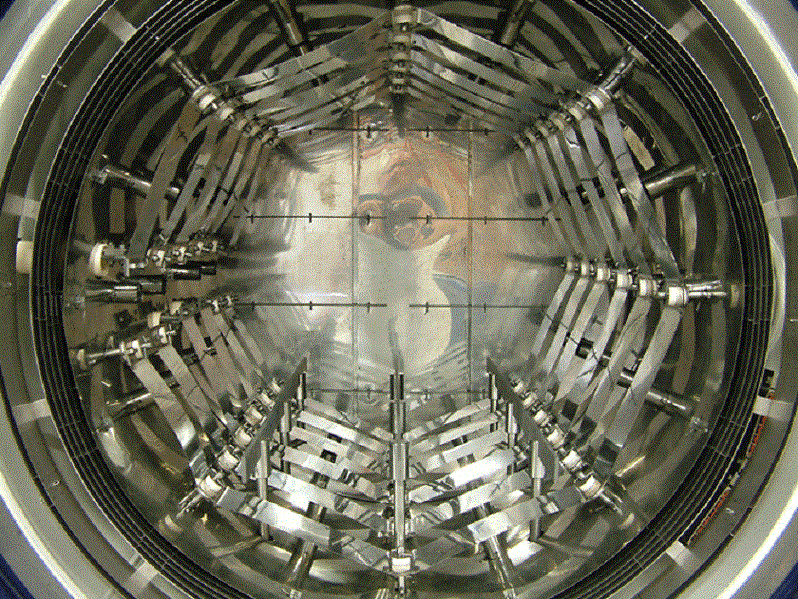Application of Molybdenum Metal and Its Alloys

Application of Molybdenum Metal and Its Alloys
With the development of science and technology, the application of molybdenum metal in high-tech and other fields is also increasing. So in this article, let's take a look at the application of molybdenum metal and its alloys.

Application of Molybdenum Metal and Its Alloys
1. Steel Industry
According to the statistics of molybdenum consumption in various countries in the world, the application of molybdenum in the steel industry still occupies the most important position.
As an alloying element of steel, molybdenum can improve the strength of steel, especially high-temperature strength and toughness. In addition, it can also improve the corrosion resistance of steel in acid-base solutions and liquid metals. Moreover, it can also improve the wear resistance of steel and improve hardenability, weldability, and heat resistance. Molybdenum is a good element that forms carbides. It will not be oxidized during the steelmaking process. It can be used alone or in combination with other alloying elements.
Molybdenum is used together with chromium, nickel, manganese, and silicon to produce different types of stainless steel, tool steel, high-speed steel, and alloy steel.
Molybdenum series high-speed steel has the advantages of wear resistance, good toughness, and strong high-temperature plasticity, and is suitable for manufacturing forming tools. Molybdenum alloy steel can be used to manufacture structural parts of machine tools, industrial vehicles, and bulldozing equipment.
2. Agricultural Fertilizer
Molybdenum is one of the necessary "trace elements" in plants, which can significantly improve the quality and yield of legumes, pastures, and other crops. Therefore, fertilizers often contain ammonium molybdate.
Molybdenum can promote the fixation of nitrogen in the air by rhizobia and other nitrogen-fixing organisms, and can further transform nitrogen into protein required by plants. Molybdenum can promote the absorption of phosphorus by plants and play its role in plants. Molybdenum can accelerate the formation and transformation of sugars in plants, increase the content and stability of plant chlorophyll, and increase the content of vitamin C. Not only that, but molybdenum can also improve the drought and cold resistance and disease resistance of plants.
The application of molybdenum fertilizer is characterized by low dosage, high yield, and low cost. It is an important measure to improve agricultural harvests, especially soybean harvest.
3. Electronic and Electrical Industry
Molybdenum has good electrical conductivity and high-temperature performance. Especially the thermal expansion coefficient of molybdenum and glass is very similar. Therefore, molybdenum is widely used in the core wire, lead wire, side rod of the spiral filament in the bulb, and as the grid and anode support material in the electron tube.
In very large-scale integrated circuits, molybdenum is used as a metal oxide semiconductor gate, and the "bimetal effect" can be eliminated by mounting integrated circuits on molybdenum. Ultra-thin seamless molybdenum tube (about 15μm) can be used as the anode bracket of the picture tube of high-definition TV. The image scanning line of this kind of TV is 1125, which is 2 times higher than that of ordinary TV.
Molybdenum wafers can also be used as substrates and heat sinks for power transistor heat shields and silicon rectifiers. In addition to the use of pure molybdenum in the modern electronics industry, Mo-Re alloys can be used as structural materials for electronic tubes and special bulbs. Mo-50Re and TZM alloys can also be used as the thermionic cathode structural components in high-power microwave tubes and millimeter-wave tubes.
4. Car Spraying
The melting point of molybdenum is as high as 2620℃, and it has good high-temperature performance and corrosion resistance and has a strong bonding force with steel, so it is the main thermal spray material in the production of automobile parts. Thermal spray materials can significantly improve the performance of piston rings, synchronizing rings, shift forks, and other worn parts, and are also used to repair worn crankshafts, rolls, shafts, and other mechanical parts.
5. High-Temperature Components
Molybdenum has the characteristics of high purity, good high-temperature resistance, and low steam pressure, and is often used to make heating elements and structural materials for high-temperature furnaces. Molybdenum has good ablation resistance in molten quartz and is often used as an electrode for energization in the glass industry, with a service life of more than one year.
In addition to being used as an electrode, molybdenum can also be used as a high-temperature structural material for glass melting, such as pipes. The use of molybdenum instead of platinum on the glass fiber drawing furnace has a good effect and greatly reduces production cost. Besides, molybdenum and its alloys can also be used for hot isostatic pressing, heat shields, sintering, and steaming paint boats, etc.
Molybdenum silicide is a widely used material for electric heating components. It has the characteristics of high-temperature oxidation resistance, excellent corrosion resistance, and high melting point, and has a long life.
6. Oil Extraction
Molybdenum can not only be used in oil and gas field drilling pipelines but is also often combined with cobalt and nickel as a catalyst for petroleum refining and pretreatment, mainly for the desulfurization of petroleum, petrochemical products, and liquefied coal.
In addition to the above-mentioned uses, molybdenum, and its alloys can also be used in fields such as the nuclear industry, aerospace, and environmental protection.
Conclusion
Thank you for reading our article and we hope it can help you have a better understanding of the application of molybdenum metal and its alloys. If you want to know more about molybdenum metal and its alloys, we would like to advise you to visit Advanced Refractory Metals (ARM) for more information.
Headquartered in Lake Forest, California, USA, Advanced Refractory Metals (ARM) is a leading manufacturer & supplier of refractory metals & alloys across the world. It provides customers with high-quality refractory metals & alloys such as molybdenum, molybdenum alloys, tungsten, titanium, tantalum, rhenium, and zirconium at a very competitive price.
{{item.content}}
LEVE A REPLY
{{item.children[0].content}}
{{item.content}}






